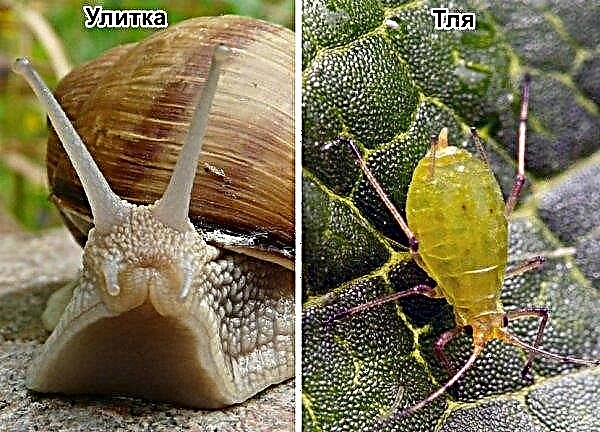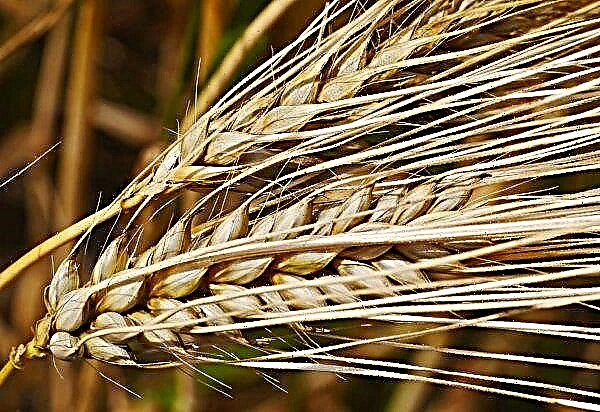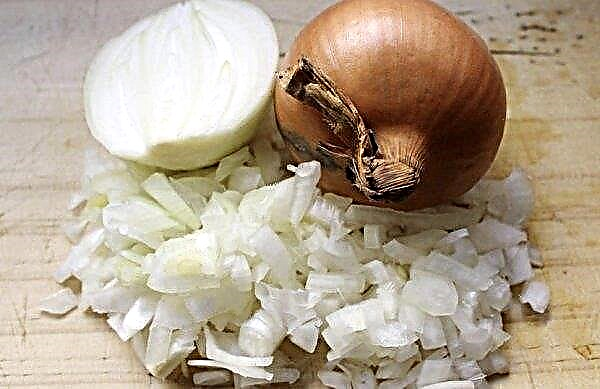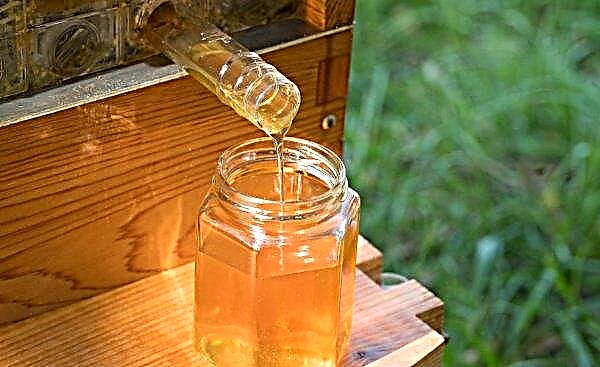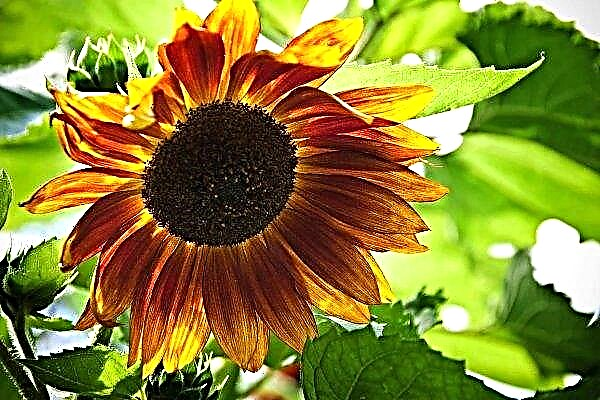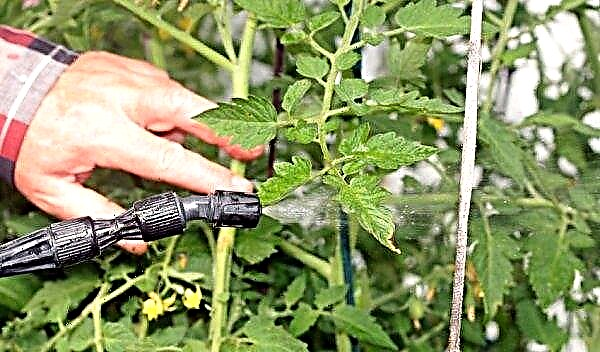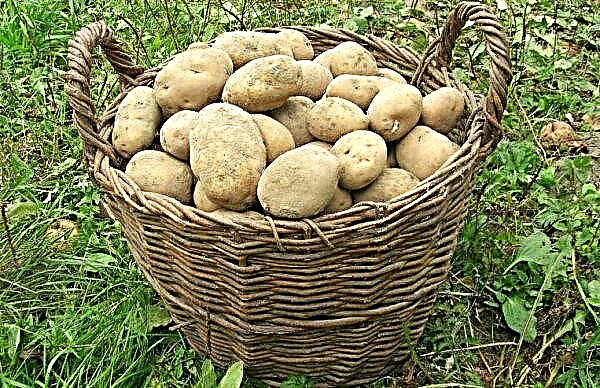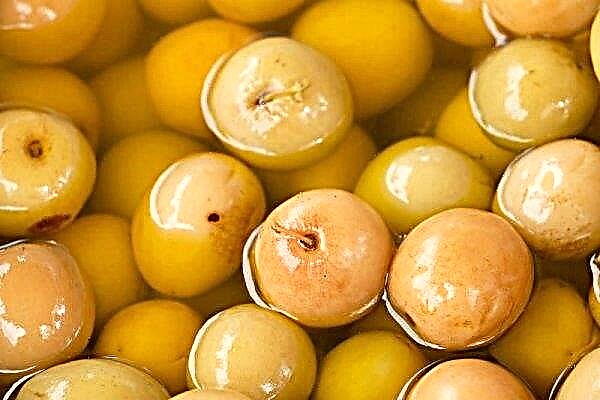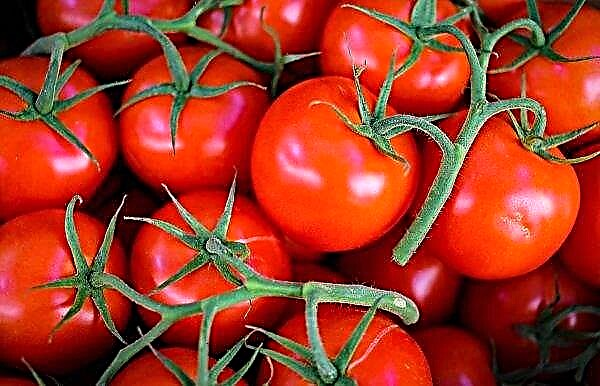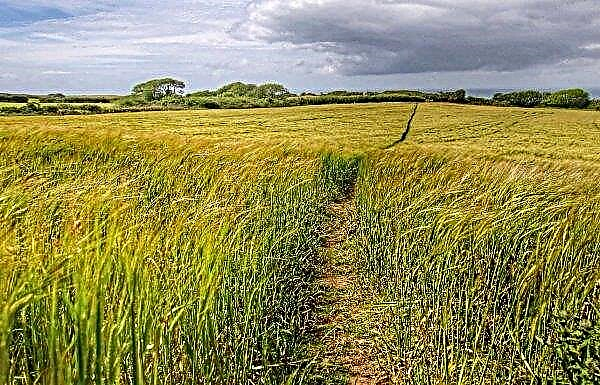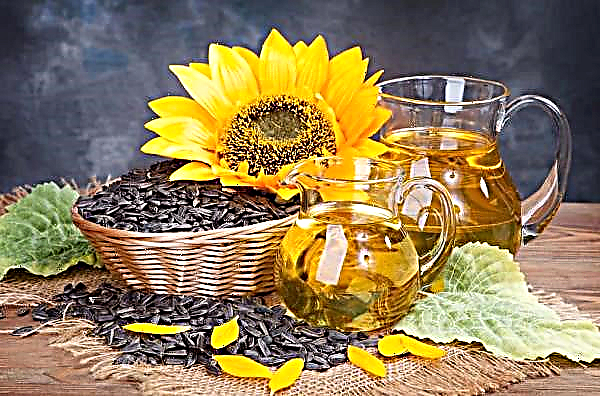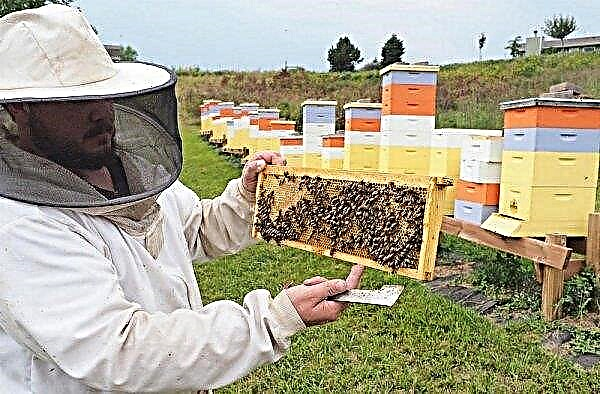Rough Guernia is a creeping stem succulent native to South Africa and the Arabian Peninsula. It is rare in our latitudes, it is bred as a home plant due to its attractive decorative appearance and unpretentiousness in care. We will talk about the features of breeding and reproduction of this plant further.
Botanical description of the plant
Guernia rough or thorny refers to medium-sized varieties. It reaches a height of 15-30 cm. The root system releases several leafless stems. Each stalk consists of 4–5 ribs covered with small spines. Additional full-fledged stems are formed on the shoots. In June, flower buds begin to form on them. Guernia flowers are painted in bright pink-brown color, have the shape of a bell. Petals have a dense fleshy structure.

Flowering guernia lasts 2-3 months. Flowers do not bloom all at once, but in turn. Each flower lives only 2-3 days. At home, after flowering, the fruits do not form; in natural conditions, after pollination, subtle bolls containing seeds are formed.
| Root system | Fibrous |
| Stem | Leafless, succulent |
| Flower shape | Bell-shaped |
| Flower color | Pink brown |
| Fruit shape | Rounded |
| Fruit color | Tan |
| Number of seeds | 40 |
Did you know? Unlike other peduncles, guernia is pollinated by flies. To ensure the continuation of the genus, the plant during flowering exudes an unpleasant smell of rotten meat, while the flowers tend to enhance their aroma in the heat.
House growing conditions
Guernia does not require special care and is well adapted to the microclimate of the human home.
Lighting
These plants will need good lighting. It is better to place guernia on the western and eastern window sills. When localizing on the southern windowsills, you need to take care of high-quality shading from ultraviolet rays in the summer heat. 
In the northern part of the house, it is better not to place guernia at all - due to poor lighting, the stems will stretch and deform, and the flowering phase may be completely absent. In the autumn-winter period, the succulent will need additional illumination with phytolamps - 8-10 hours.
Important! Guernia rough quickly gets used to a fixed angle of illumination, so moving plants to another place or turning around its axis leads to the dropping of buds and loose flowers.
Temperature
Succulent tolerates the summer heat well, so with the onset of steady spring heat, it is better to move the flower to a balcony or garden. The main thing: to provide high-quality shading from direct sunlight. The plant develops well at a temperature of + 20-30 ℃.
In winter, plants go into a dormant phase. During this period, they need to ensure the temperature regime within +10 ℃.
Air humidity
The optimum air humidity for guernia is low or medium, in the range of 30–50%. An increase in humidity of up to 70% will lead to decay of the roots and shoots.
Home Care
When growing rough guernia, the most important thing in leaving is to take into account the characteristics of the plant. Violated moisture conditions threatens to rot the root system. In guernia, it is fragile, located in the surface layers of the soil, so it will be almost impossible to save the plant. When waterlogging the soil, plants die in 2 days.
Watering
In the summer, moderate watering under the root with warm, defended water at a temperature of at least +20 необходим is required. Humidification is carried out after drying of the topsoil on 
After the guernia leaves the dormant period, flower growers are faced with the problem of reducing the absorption of moisture by the upper layers of the soil. In such cases, the pot is placed for 20 minutes in a container filled with water. When bubbles begin to appear on the surface of the water, the plant is rearranged and transferred to standard summer watering.
Top dressing
Fertilizers begin from the moment of leaving the dormant phase - in March-April. Top dressing is applied once a month. When choosing a fertilizer, it is better to give preference to complexes containing nitrogen, potassium and phosphorus in the proportions of 1: 2: 4.
When applying universal fertilizers, the dosage for succulents is taken 2 times less than in the instructions on the package, which is 1 g of substance per 1 liter of water.
Feeding is not carried out during the dormant period and immediately after a dive into a new pot.
Important! An excess of nitrogen is detrimental to succulents. Its increased content in the soil contributes to the decay of the root system.
Pruning
Guernia shaping pruning is not needed. Sanitary boils down to the timely cleaning of dead old stems.
Transfer
Transplantation is carried out annually in the spring. Capacity is taken 5 cm more each time than the previous one.
The mixture is prepared by mixing in equal proportions the following components:
- leaf-sod soil;
- sifted coarse sand;
- wood ash;
- lime.
When using ready-made soil mixtures for succulents, they add 20% of charcoal mixed with lime. The containers must be disinfected with a solution of manganese or alcohol before use, and dried well. The bottom should be filled with expanded clay or crushed polystyrene, and lay the ground on top. A couple of hours before the transplant, the container with the plant is installed in a plate filled with water, then watered under the root. When the soil gets wet, carefully remove the plants along with the roots, inspect for damage, and if necessary, remove damaged roots. Old stems can also be separated.
A couple of hours before the transplant, the container with the plant is installed in a plate filled with water, then watered under the root. When the soil gets wet, carefully remove the plants along with the roots, inspect for damage, and if necessary, remove damaged roots. Old stems can also be separated.
In a container prepared for transplantation, a recess is made that is suitable for the size of the root system. Having placed guernia in the planting fossa, it is aligned with the root neck and sprinkled with soil. For a week, the plants are placed in a warm, shaded room.
Propagation by cuttings
Cuttings are cut from old shoots. During the transplant, they are separated and cut into pieces of 7-10 cm. For several days they are dried. For this, the cuttings are wrapped in gauze and sent to a dark, closed cabinet. After 2-3 days, the places of the cut are treated with charcoal and planted in general containers. The soil for planting is mixed from 1 part peat and 3 parts sand. Cuttings are buried in the soil by 2-3 cm.
After 2-3 weeks, the shoots will take root and will be ready for transplanting into separate containers. Now you can use the universal earth mixture for succulents.
Did you know? Succulents differ in structure from ordinary representatives of the flora. In their stems is a special tissue that accumulates liquid, capable of storing it for a long time, nourishing the roots.
Possible growing difficulties
With an excess of moisture and an increase in the concentration of nitrogen in the soil, flower growers may encounter the following problems when growing guernium rough:
- root and stem rot - it is impossible to solve the problem, after the appearance of the first symptoms, the plant dies after 2 days;
- mealybug - it is removed manually with a cotton swab dipped in soapy water, then Aktara insecticide is treated according to the instructions.
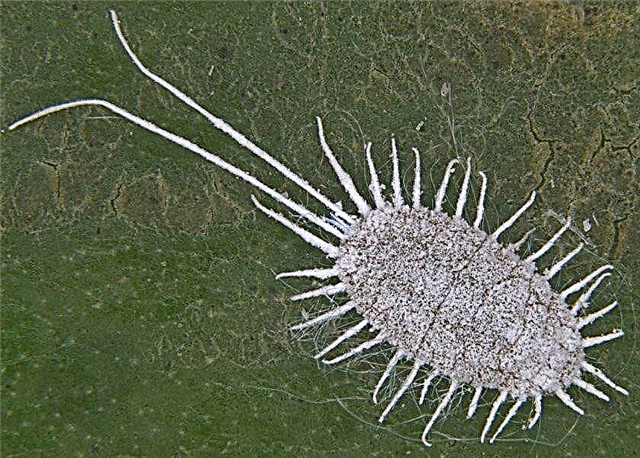
Rough Guernia is an interesting variety of succulents. The plant adapts well to any microclimate and is unpretentious in care. The only requirement is moderate humidity.


